Sign up for Chalkbeat Chicago’s free daily newsletter to keep up with the latest education news.
This story was reported and published in collaboration with Block Club Chicago. Sign up for their newsletters here.
A few years ago, Nash Elementary was thrown into disarray when dozens of English language learners — largely migrant kids from South and Central America — began enrolling at the West Side school.
Teachers had to scramble to find ways to help the new arrivals.
They used Google Translate and turned to resources online. One struggling teacher assigned her students “busy work” and eventually decided to travel abroad to learn Spanish.
And every day, students — like one Ecuadorian fourth grader who struggled to read and write in English — were left without the support guaranteed to them in state law.
“He shouldn’t have had to suffer for almost three years before he was able to receive the type of help that he needs,” said Sylvelia Pittman, a 20-year teacher at Nash who advocated for more bilingual resources in the new Chicago Teachers Union contract.
English language learners in bilingual programs are often waiting for what they’re legally entitled to — instruction in their native language — and teachers feel their schools are ill-equipped to serve large shares of these students, according to interviews and a Block Club and Chalkbeat analysis of public records.
Since an influx of migrant students began arriving in Chicago in 2022, the number of Chicago Public Schools required by state law to open a bilingual program increased by about 20%, according to records obtained by Chalkbeat and Block Club Chicago through a Freedom of Information Act request. This school year, 57 additional schools, including charters, must meet state requirements.
State law requires schools to launch a bilingual education program after 20 students who are English language learners and speak the same native language enroll.
But under the district’s funding formula, CPS provides a school with a full-time bilingual coordinator when it enrolls 50 or more English language learners. That person is meant to help schools carry out extra services for English language learners, a group that’s grown by 25% in district-run schools since 2022. The state declined to comment on the district’s formula.
CPS officials said bilingual coordinators are not meant to be the sole individuals in the school providing additional support to English learners. District and state officials say there’s no predetermined number of how many bilingual teachers are needed for a bilingual program.
Using data obtained through an open records request, Chalkbeat and Block Club conducted its own analysis to explore what staffing looks like in schools required to teach English learners in both English and their native language.
Across the district, there are on average about five bilingual teachers per every 100 English language learners. But that picture looks different on the school level. The district-run schools newly required to have bilingual programs, on average, have half as many certified teachers per English learner compared to more established programs.
Of the district schools required to have bilingual programs, 1 in 4 enroll more than 40 English learners for each bilingual-certified teacher on staff, according to Chalkbeat and Block Club’s analysis. Nearly 40 schools enroll more than 60 English learners for each certified bilingual teacher. A handful of schools have no one certified to teach bilingual education on staff, despite legal requirements to provide bilingual services.
In a statement, CPS said bilingual programs vary in size and don’t necessarily require full classrooms at every grade level overseen by bilingual teachers.
At Nash, where there are now two certified bilingual teachers and more than 70 English language learners, teachers say it’s taken multiple years to see any growth in some of their newcomer students. The school has been required to have a bilingual program for the past two school years.
And at schools newer to bilingual education, like Nash, bilingual coordinators are sometimes the only people certified to teach in a child’s native language, Chalkbeat and Block Club Chicago found.
The analysis included 3,400 staffers certified to teach bilingual education. It does not include teaching assistants, a position the district has agreed with the teachers union to beef up but is not certified to teach bilingual education.
In addition to bilingual coordinators, the district said it provides guidance to schools that are supposed to launch bilingual programs. Officials also contend that CPS has significantly increased the number of bilingual teachers and that it’s up to principals to hire the right people for their schools.
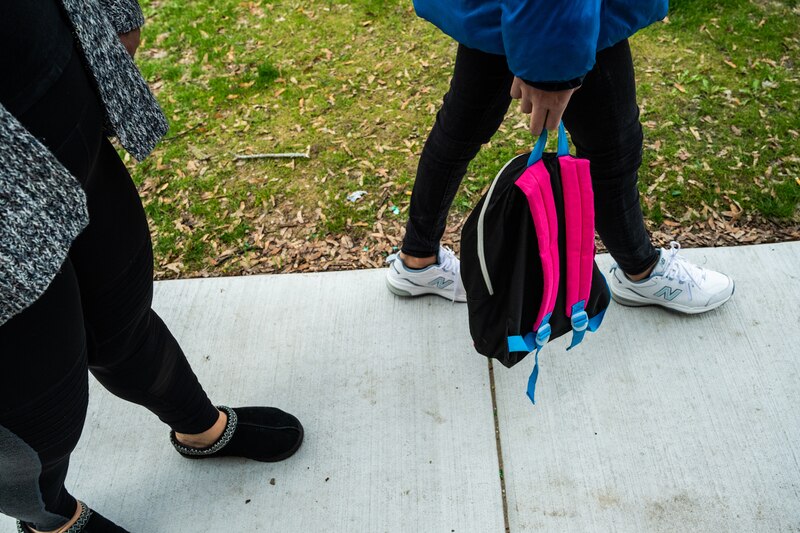
But the issues at Nash reflect broader challenges in CPS. Last year, Block Club and Chalkbeat found that many migrant students from South and Central America were struggling to learn after landing at segregated schools on the South and West sides that had not previously served children with language needs.
In recent years, nearly all bilingual programs have failed audits conducted by the district. And the number of investigations conducted by the Illinois State Board of Education into alleged violations of bilingual education at Chicago schools has increased, Block Club and Chalkbeat found.
And as President Donald Trump declares English the official language of the U.S. and guts the office meant to serve the country’s 5 million English learners, the state could play a bigger role in holding districts like Chicago accountable for failing to provide enough support to kids learning English as a second language.
Schools that are out of compliance are “out of step with the research” on what works for English learners, said Conor Williams, a senior fellow who studies English learners at The Century Foundation, a progressive leaning policy think tank.
“If we’re not going to fund helping schools become bilingual, as the state mandates us to do, we should own that that’s something we’ve decided we don’t care enough about to fund,” Williams said.
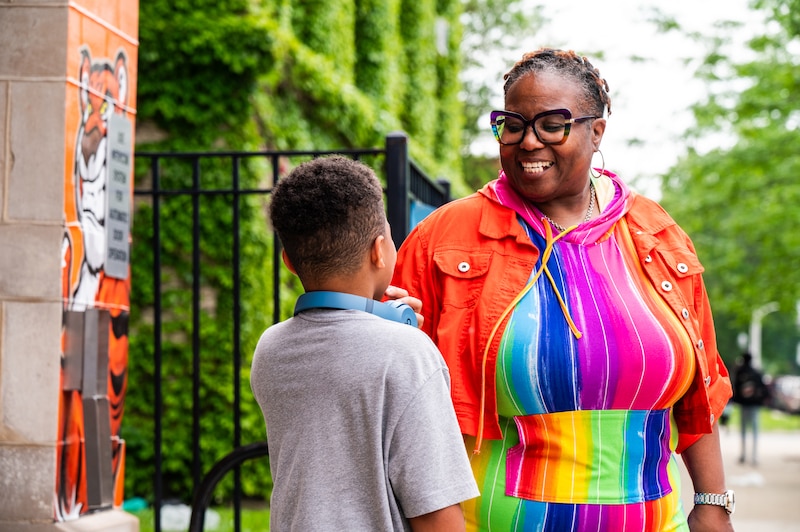
Nash’s new bilingual coordinator only the ‘tip of the iceberg’
Pittman, who has taught in CPS schools for 24 years, is currently an interventionist at Nash, 4837 W Erie St. The district created the role in response to the pandemic to provide extra support to struggling students.
As Pittman and her colleagues worked to help students recover from the public health crisis, however, Nash began to face a new challenge.
In the months before the 2022-23 school year, busloads of migrant families began arriving in Chicago from the southern border. The school had 230 students at the time, fewer than half what the district calculates Nash’s building could enroll. Historically in CPS, fewer students have meant smaller budgets.
The surge of newcomer students boosted Nash’s enrollment. By the end of September 2023 — about a year after migrants began arriving — Nash had enrolled 48 English language learners, according to preliminary enrollment data from that time pulled by Chalkbeat and Block Club. Some time that month, CPS said it gave the school a part-time bilingual coordinator position, but Chalkbeat and Block Club were unable to verify exactly when that person was hired.
In the meantime, teachers felt they didn’t have adequate tools to teach the school’s English learners.
Staff relied heavily on Google Translate to communicate with the new students and their parents — a practice educators at other schools have told Chalkbeat and Block Club Chicago they have also adopted.
Corinne Lydon, a middle school English teacher at Nash, said she felt like a “deer in headlights” when a lot of English learners first began enrolling at Nash a couple years ago.
The school didn’t have a Spanish language curriculum available for Lydon to use, so she tried to find help online and assigned her newcomer students a lot of “busy work,” she said. (CPS has developed a Spanish language arts curriculum for bilingual programs, a spokesperson said.)
Before the 2023-24 school year, the district only provided schools with a full-time bilingual coordinator if the school had at least 100 English learners. Officials said they dropped that threshold to 50 English learners starting last school year.
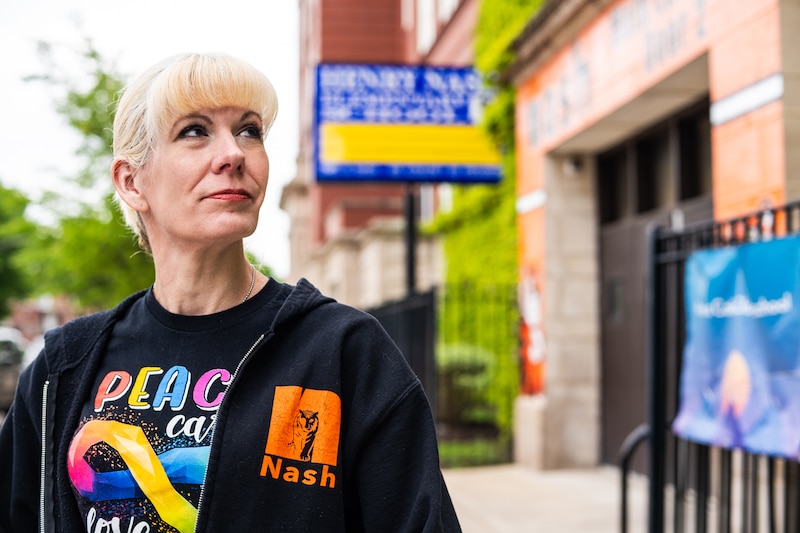
By March 2024, Nash had enrolled 61 English learners, according to preliminary enrollment data.
Now, more than a year later, Nash has two staffers certified to teach bilingual education, including the bilingual coordinator, and five others who can teach English as a second language but not bilingual education, according to district staffing records. The school today enrolls more than 70 English learners, the most for Nash in at least 15 years.
CPS said it allocated an additional part-time bilingual coordinator position to Nash this school year, but it’s unclear if that position has been filled.
Lydon recently finished her courses to teach English as a second language after encouragement from Nash’s principal. The district covered half the cost of the certification and Lydon financed the remaining $1,300. (This was before the new teachers union contract, which would have afforded Lydon full coverage.)
But Lydon also felt it was critical to learn Spanish, so she traveled on her own dime to Guatemala last August and Mexico over this spring break to learn the language through immersion, in part by living with local families.
“I felt so unprepared, so I just wanted to do all the things possible to be able to best service my kids,” Lydon said.
Lydon thinks her ESL training and Spanish lessons are helping her students. For example, one of her sixth grade students is finally completing assignments and saying full sentences in English — but that’s two years after first enrolling at the school.
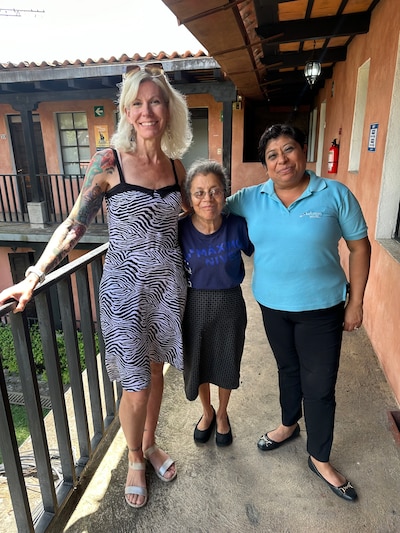
Despite the challenges Nash has faced, Karime Asaf, chief of multilingual and multicultural education at CPS, touted the school as a good example of how the district helps a school create a new bilingual program, in part by providing a bilingual coordinator who can train other teachers working with English learners.
Pittman said the bilingual coordinator has made a difference at Nash by being able to talk to students and their parents about their needs. And Pittman said she has seen some academic growth in students.
But as a part-time staffer, the coordinator hasn’t had enough time to spend with all the new English learners, particularly in middle school, Lydon said.
Pittman said bilingual coordinators are just “the tip of the iceberg.” One bilingual coordinator plus a couple of staffers who speak Spanish don’t add up to an actual bilingual program, she said.
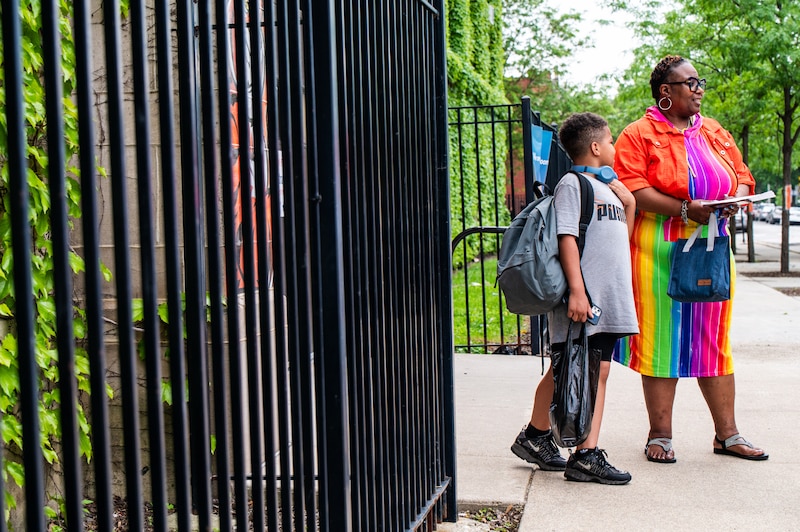
A challenge to launch bilingual programs
More than three-quarters of the 57 CPS and charter schools now required to launch bilingual education programs are on the city’s South and West Sides in communities that don’t have predominantly Latino populations, according to the records obtained by Chalkbeat and Block Club through an open records request. Only seven of those schools had previous bilingual program requirements anytime in the last five school years.
But both CPS and the state said bilingual programs can’t be created immediately, and they don’t look the same at every school.
By state law, a bilingual program requires teaching students language arts, math, science and social studies in both English and their native language. Schools will still also provide English as a Second Language — or English only — instruction. The state gives schools “time to implement necessary programs” and links each district with a state expert to help them create the programs, said Lindsay Record, spokesperson for the Illinois State Board of Education.
“It’s a multi-year program,” Asaf, from CPS, said. “It doesn’t mean that if you receive 30 students, next month, you can have a full, established bilingual program.”
Under the district’s funding formula, CPS provides positions to schools, and principals hire people to fill those roles. Schools get more positions if they have greater needs.
CPS officials said they’ve prioritized recruiting more bilingual certified teachers. But when it comes to ensuring individual schools have the right staff, officials described a largely hands-off approach.
Asaf’s office works with bilingual coordinators to “identify gaps in services” for English learners and recommends solutions to school leaders, said Sylvia Barragan, a CPS spokesperson, in an email to Chalkbeat and Block Club Chicago.
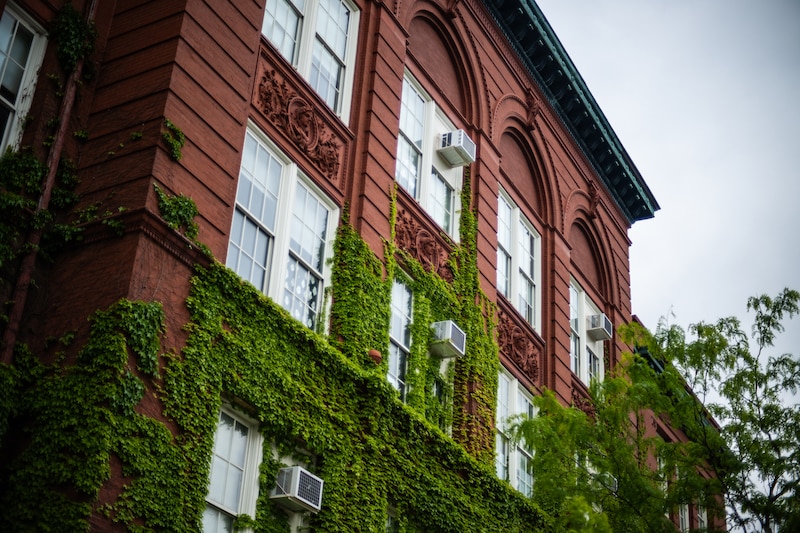
One principal whose school has dozens of English learners said the district is offering “less advice” than before on how to serve English learners, even though the school is still trying to figure out how to meet legal requirements and student needs.
“Normally when I advocate [for resources], I get heat” from the district, said the principal, who requested anonymity because they were not authorized to speak to the press.
The principal takes issue with the district’s bilingual coordinator formula, saying the needs of individual English learners, not the total number of English learners, should be the determining factor.
“You don’t know the needs of those 75 kids or those 40 kids or those 50 kids,” the principal said.
Research has shown that English learners grow better academically in bilingual education programs than when they’re taught in English, according to three experts who have studied English language learners and immigrant communities.
But a shortage of bilingual teachers can make setting up a bilingual program difficult.
“If you’re a school and you’re fully staffed, you’ve got all your teachers, and suddenly you trigger a bilingual education mandate, you can’t just fire half of your teachers because they’re English-speakers only and hire a bunch of new Spanish-dominant or bilingual staff,” Williams, from The Century Foundation, said.
And it’s not easy for schools to convince longtime staffers to get bilingual certification.
For example, at Tarkington Elementary School in Chicago Lawn, the principal told seventh grade teacher Vivian Perez she would be laid off because the school needed more bilingual-certified staff. Perez then scrambled to get a temporary bilingual license.
But CPS says the school’s efforts to encourage other staff to get certified haven’t been successful — and Tarkington still needs bilingual teachers for seventh grade.
Perez now teaches her class in English and Spanish, which she believes makes students “feel like they’re not forgotten.”
The district views its role in solving the problem as “really dramatically increasing the supply” of bilingual teachers, who often seek jobs in predominantly immigrant school communities, said Ben Felton, chief of talent for CPS.
Felton said the district recruits and provides early offers to teaching candidates at the city’s hardest-to-staff schools, which disproportionately exist on the South and West sides and are seeing a “higher need” for bilingual teachers, he said.
CPS will now cover 100% of costs of getting a bilingual certification for up to 300 teachers in high-need areas each year as part of the new Chicago Teachers Union contract.
As of April, 3,400 of the district’s roughly 20,000 teachers were certified to teach bilingual education — a 22% increase since just before migrants began arriving in Chicago in spring 2022, according to data CPS shared with Chalkbeat and Block Club Chicago.
But how those teachers are deployed across the district is uneven, especially among schools newly required to provide bilingual services in the 2024-25 school year.
On top of that, it’s not clear how many of those certified educators are actually teaching in a bilingual program or are certified to teach their students’ native language.
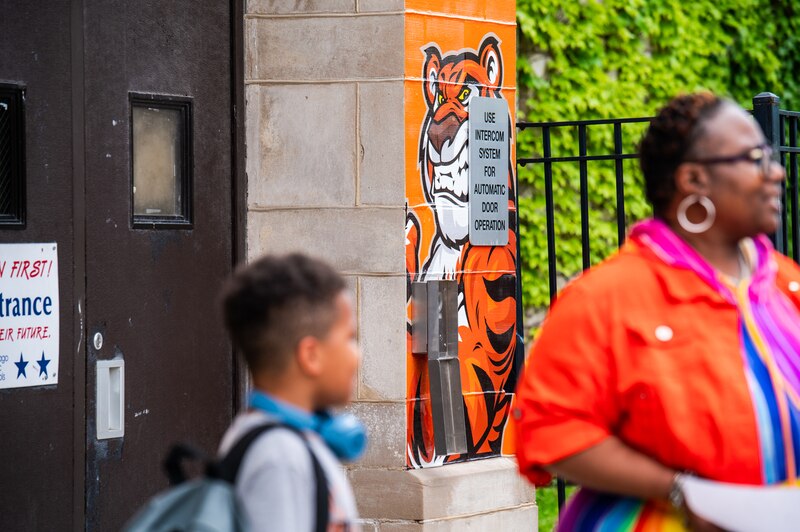
Schools caught in the middle
The district’s policies for staffing bilingual programs are also flawed in a practical sense, according to teachers and other school leaders.
A few miles east of Nash, Morton School of Excellence, 431 N. Troy St., is an example of district policy failing to keep up with the unpredictable nature of mass migration.
Like Nash, Morton teachers and administrators were completely unprepared when the Humboldt Park school received an influx of newcomer students last school year, according to Local School Council president and parent Cori Bradley.
Historically, most of the school’s students have been Black native English speakers. The school had 18 English learners at the start of the 2023-24 school year. By that March, the school had more than 80 English learners, almost doubling the student population. The staff had to respond on the fly.
“The school was operating in emergency mode for four or five months,” Bradley said.
“We didn’t have books for them. You had classrooms that had 35 kids. … The concern was: Are students learning? Can teachers adequately teach? Are there enough chairs and desks? It felt like the school had become a shelter.”
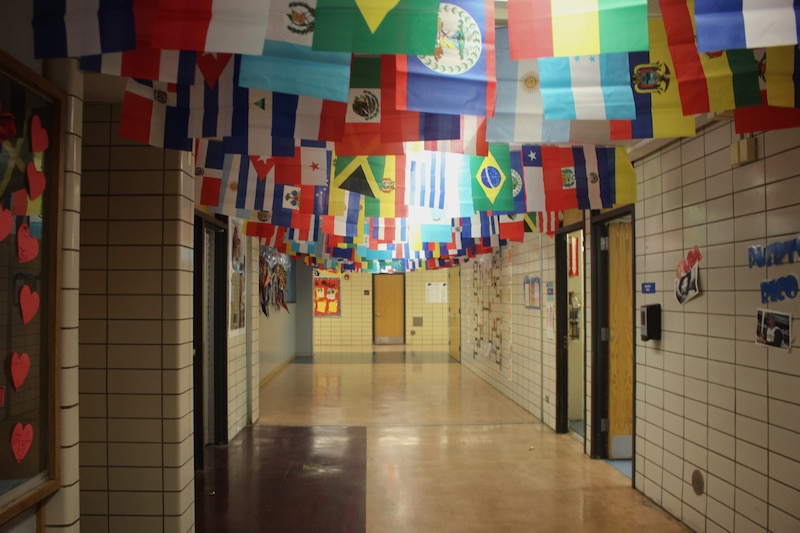
But by the time the district gave Morton a full-time bilingual coordinator at the start of this school year, the situation had completely changed. Morton’s English language learner population had shrunk by more than half to 35 students as of late February.
Because of that, Morton’s bilingual coordinator is slated to be part-time next year.
Barragan, the district spokesperson, said schools that don’t qualify for bilingual coordinators typically “nominate” an existing staffer to take on the role for an additional stipend.
Morton currently has five teachers certified to teach English as a second language and one who is certified to teach bilingual education — the current bilingual coordinator — according to the district’s April staffing data.
When Bradley asked if the part-time bilingual coordinator will be sufficient at a recent Local School Council meeting, Morton’s principal, Zachary Korth, told her he’s discussing the issue with staff and plans to advocate for more resources if necessary.
Korth said there are “rumblings” more newcomer families are planning to move. Two city-run shelters near the school have closed, driving families to other parts of the city and elsewhere, school leaders said.
School districts generally can’t easily respond to rapidly changing student populations, said Williams, from The Century Foundation. They fund schools based on a certain enrollment count or projection.
The district has a pool of bilingual teaching assistants that it can deploy to schools that are seeing more English learners enroll, according to district officials.
Chicago schools under state oversight for bilingual education
CPS is currently under state oversight for failing to meet bilingual education requirements.
The state requires corrective action any time an investigation finds that a CPS school is not in compliance with bilingual education requirements, officials said. When investigators find evidence of wrongdoing, the district is put on an action plan.
If a district doesn’t properly address the action plan, it can be subject to “sanctions” including loss of state or federal funding, said Record, the state spokesperson. State officials did not say when CPS must meet goals outlined in its latest corrective action plan.
Since the 2021-22 school year, ISBE has conducted no more than two investigations annually of alleged violations of bilingual education requirements at CPS schools. But this school year, the state has nine open investigations and has already completed two others — one of which found violations at Catalyst Charter School.
At Catalyst, an undisclosed disagreement among staffers led to the principal asking a teacher to stop offering English learner services to a group of fifth graders for about a month. Teachers were also not taking students’ English proficiency levels seriously, potentially impacting the type of services they received, according to the investigation notes.
The spike in complaints could be due to heightened awareness of the problem and advocacy for solutions. The Chicago Teachers Union made a big push for compliance and hosted workshops to train school staff how to file state complaints around bilingual education.
Others say the surge is a reflection of the state and school district’s longstanding inability to meet the needs of English learner students.
Audits that CPS conducted of bilingual and ESL programs from 2018 to the beginning of 2024 found that all but two programs did not comply with state law, according to public records obtained last year by Chalkbeat and Block Club Chicago.
Complaints about CPS schools failing to provide proper bilingual education also prompted federal oversight in the past.
From 1980 to 2009, Chicago Public Schools was under a federal consent decree that ordered the district to desegregate its schools and ensure English language learners were getting enough support. The decree had to be updated twice, in part because CPS was failing to provide enough staffing and materials to English learners.

Experts say that sort of oversight is highly unlikely under the Trump administration.
In March, the federal government fired nearly every employee responsible for ensuring that districts were properly using federal funds meant to support English learners.
Patricia Gándara, a UCLA research professor who co-authored a book about the impact of immigration enforcement on schools, said the president’s executive order to make English the nation’s official language suggests the administration is not interested in bilingual education.
As a result of these moves, state and local officials will likely be tasked with ensuring those students are getting the support they need.
Pittman, the Nash teacher, said her principal has encouraged teachers to earn their bilingual certification. The principal is also planning to create virtual programming for some grades of students who need to learn English and Spanish, she said. The principal declined to be interviewed.
Newcomer students at Nash “are growing academically, but it’s taking them longer because they do not have all the bilingual support they’re supposed to have,” Pittman said.

Reema Amin is a reporter covering Chicago Public Schools. Contact Reema at ramin@chalkbeat.org.
Mina Bloom is an investigative reporter for Block Club Chicago. Contact Mina at mina@blockclubchi.org.
Kae Petrin is a data & graphics reporter who covers data related to K-12 education, voting rights, and public health for Civic News Company. Contact them at kpetrin@chalkbeat.org.

